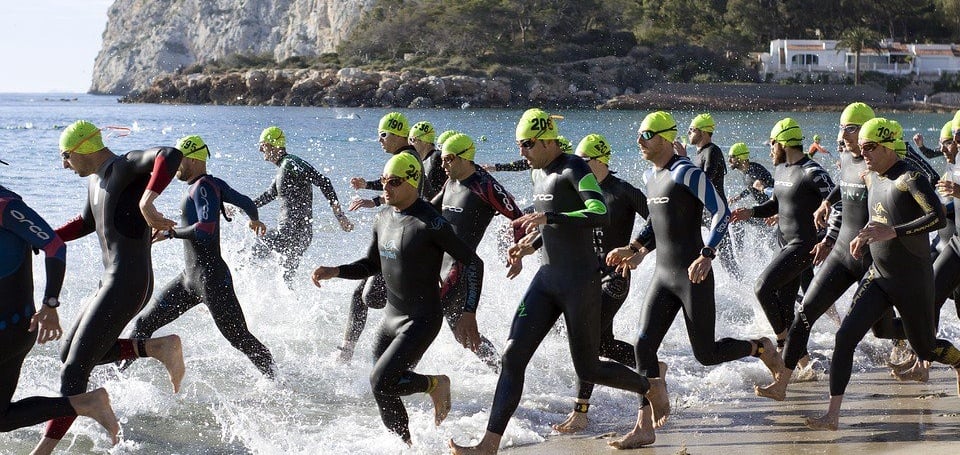Ironman & SwimLabs: Introduction to the Triathlon
To celebrate SwimLabs’ partnership with Ironman, we’re posting a series of blogs on triathlon training at SwimLabs. The first blog is an interview...
2 min read
Laura Dravenstott : Jun 8, 2018 4:00:29 PM
.jpg)

To celebrate SwimLabs’ partnership with Ironman, we’re posting a series of blogs on triathlon training at SwimLabs. The first blog is an interview with Louis Cicchino, a top-ranked amateur triathlete and triathlon coach / owner at Accelero Endurance. Louis has a Bachelor’s degree in Exercise Science from Metro State University, a Certified Training Certificate from the National Academy of Sports Medicine, and is a USA Triathlon Certified Coach. Louis is also an instructor at SwimLabs Highlands Ranch and conducts open water clinics at Grant Ranch. Interviewer Laura Dravenstott is an instructor at SwimLabs. This is part II of the interview. Find part I here!
Laura Dravenstott: “What do you look for in triathletes who come to SwimLabs for video and feedback?”
Louis Cicchino: “Body position is key. I look at the head and where the eyes are focused. Are the hips too low? How is the kick – is it level or dragging? I can see this easily on the video and so can the athlete. We can correct technique and teach them how to engage the core on the swim.”
LD: “What about the front part of the stroke?”
LC: “The stroke is another place we can make a swimmer more efficient. I see people pushing water to the side or down, especially on the breath, instead of straight back to the feet for efficient forward motion. We can correct that with tools and drills.”
LD: “Are there any other areas of focus for triathletes?”
LC: “The breathing pattern. By practicing bilateral breathing, an athlete can develop muscle groups on both sides of the body equally. If the athlete breathes only to one side, they place stress on that muscle group. Think about it – if someone breathes 8 times per 25 m, that is 32 times per 100 meters and 480 times in a 1500 m race. That’s a lot of stress on one side of the body and can lead to a side stitch on the bike or the run. We work hard to balance out the breathing for that reason.”
LD: “What changes can an athlete expect to see after a session at SwimLabs?”
LC: “Fortunately, it’s easy to quantify swimming gains. We often see an improvement in technique within a thirty-minute session because the video feedback is so helpful. We can do time trials in a 100m before and after the session to measure reduction in time, and we can use an efficiency score to see if the stroke is more efficient. This could be a count of the number of strokes per length, or a SWOLF score on the Garmin. A reduction in the number of strokes it takes to get across the pool will equate to a better score and more efficient technique.”
.jpg?width=2400&name=Shot10_CompetitiveSwim149%20(1).jpg)
LD: “Sounds terrific! What would you say to an athlete who is worried about coming in to SwimLabs?”
LC: “Especially with a half – or full Ironman, efficiency in the swim is crucial and key. Triathletes often ask ‘am I going to make the swim cutoff?’ or ‘what race has the easiest swim?’ You don’t need to worry about these things if you just come in and see us! We’re not scary. We don’t bite. We can fix it! There’s always something to learn, even for us. I do one to two sessions per month at SwimLabs myself, because I am always learning and getting more efficient. Come into SwimLabs or come out to Grant Ranch for a clinic, and we will make sure you’re refreshed and not fatigued after the swim.”
For more information or to sign up for a lesson, visit https://www.swimlabs.com.
SwimLabs Littleton and SwimLabs Highlands Ranch run open water clinics at Grant Ranch. Get more information and sign up here.

To celebrate SwimLabs’ partnership with Ironman, we’re posting a series of blogs on triathlon training at SwimLabs. The first blog is an interview...

SwimLabs Westchester (Elmsford, NY) hosted an IRONMAN + SwimLabs Event on June 16, 2018, with professional triathlete Laurel Wassner and local...

We ask Mary Carey how she prepared for her 3-day ultra-endurance event in the Ultra 520k in what was recently held in Canada. Mary Carey is a USA...

Visit our Water Safety Blog for expert advice, family tips, and more!